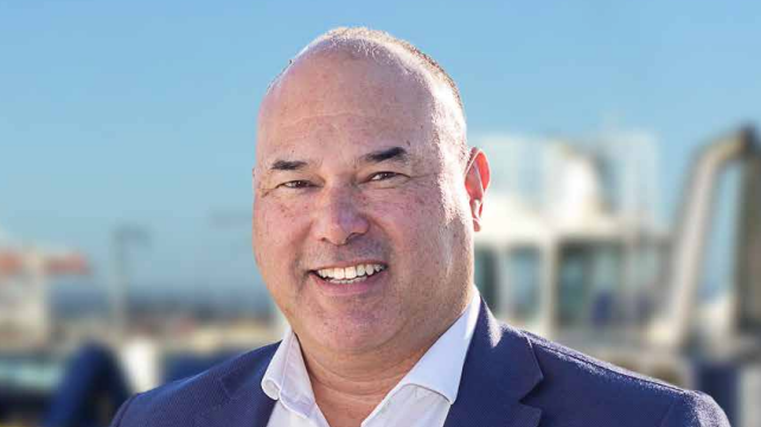Ports working to ‘get back on time’

Port of Tauranga has reported strong financial results for the first six months of the 2023 financial year despite decreases in some cargo volumes.
Group net profit for the period to December 2022 was $62.7 million, an increase of 11.3 per cent compared to the same period last year. Total cargo volumes decreased by 2.5 per cent to 12.7m tonnes.
The company’s performance was driven by an increase in container volumes and transhipments, as well as the return of cruise ships to the Bay of Plenty.
Container volumes increased 2.5 per cent to 637,728 TEUs for the six-month period, with transhipped containers jumping by 21.7 per cent.
Imports came in at 5m tonnes – down by 0.9 per cent – and exports totalled 7.7m tonnes for a decrease of 3.5 per cent. There were 701 ship visits, up by 2.5 per cent.
Chief executive Leonard Sampson, pictured, says intermittent delays and congestion continued to plague the container terminal as container vessels continue to arrive off-schedule.
“Bunching over the past few months has resulted in ships waiting at anchor and surges of container volumes, putting pressure on terminal capacity and efficiency.”
He adds a return to schedule reliability over the coming months would alleviate terminal congestion and in turn improve productivity.
“By reinstating adherence to pro-forma windows, we will be able to accurately predict container volumes and match resources accordingly. This will allow us to deliver improved efficiency and avoid delays for shipping lines and shippers.
“We have been working with other ports to ensure the entire network can get back on time and allow us to better plan capacity, including labour, rail and road transport.”
Port of Tauranga chairwoman, Julia Hoare, has expressed sympathy to those impacted by Cyclone Gabrielle.
“The port suspended operations for 36 hours, but we were fortunate to avoid any significant damage from the storm. We will support the disaster relief and recovery in any way we can.”
Hoare notes the mid-year financial results reflected the port’s resilience amid fluctuations in cargo volumes and widespread port congestion.
“Shipping schedule unreliability and increased operating costs have been challenges. We’ve mitigated impacts of congestion through surcharges to incentivise smooth cargo flows and avoid excess dwell time for containers in the terminal.”
Port of Tauranga is seeking to improve supply-chain resilience by building capacity in the form of a berth extension at the container terminal. The resource consent hearing at the Environment Court is due to begin on February 27.
“Without this development, New Zealand importers and exporters are facing severe capacity constraints,” says Hoare. “The development is critical to the New Zealand economy.
“The catastrophic weather events of the past few weeks have also demonstrated New Zealand is in dire need of greater resilience and capacity in the national supply chain.”
The proposed container berth extension has been included in the regional coastal environment plan since 2003 and detailed planning began in 2019. It involves converting cargo storage land to the south of the existing wharves to create an extra berth.





